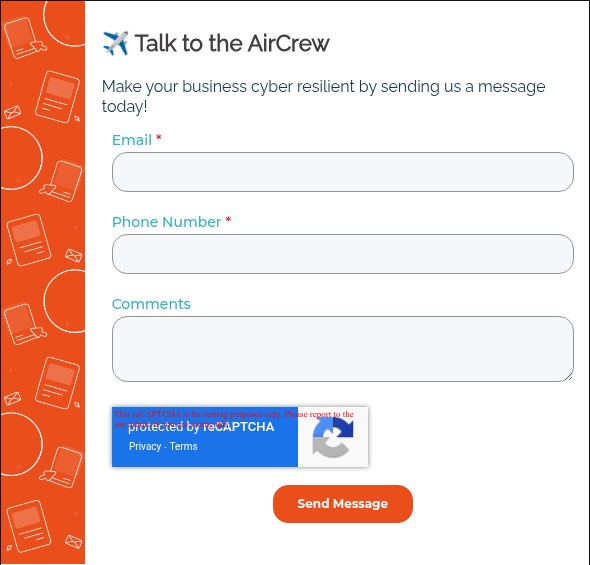Cybersecurity teams are drowning.
Attacks are increasing by double digits annually, the talent shortage shows no signs of improving, and alert fatigue is pushing experienced professionals toward burnout. The average enterprise security team faces thousands of alerts daily—95% of which turn out to be false positives that waste precious time.
Traditional security tools can’t keep up. They’re reactive, require constant manual intervention, and struggle to detect sophisticated threats that blend into normal network traffic. Meanwhile, attackers are using AI to automate reconnaissance, write convincing phishing campaigns, and find vulnerabilities faster than defenders can patch them.
AI automation isn’t replacing security teams—it’s multiplying their capacity by handling repetitive tasks, analyzing massive datasets in seconds, and identifying patterns humans miss. AI lets security professionals focus on strategic work that actually requires human judgment and creativity.
Below, we’ll walk through real ways to use AI automation in cybersecurity operations right now—not theoretical future possibilities, but capabilities organizations are deploying today to defend against real threats.
What Is AI Automation in Cybersecurity?
AI automation in cybersecurity uses artificial intelligence and machine learning algorithms to automatically detect, analyze, and respond to security threats without human intervention.
AI automation goes beyond basic security automation. Traditional automation follows predefined rules: if X happens, do Y. It works for known threats with clear signatures, but it can’t adapt to new attack patterns or make nuanced decisions about ambiguous situations.
AI-powered automation learns and evolves. Machine learning models analyze millions of security events to identify what normal looks like, then flag deviations that might indicate threats. Natural language processing reads threat intelligence reports and applies insights automatically. Deep learning detects sophisticated attacks that traditional rule-based systems miss entirely.
The difference shows up in real-world scenarios:
- Basic automation might block known malware signatures, but AI automation identifies never-before-seen malware variants by analyzing behavior patterns.
- Rule-based systems trigger alerts for failed login attempts, but AI distinguishes between a legitimate user who forgot their password and a credential stuffing attack in progress.
This matters more now than ever. Attack sophistication is increasing faster than security teams can scale. The average time to detect a breach is still measured in months instead of minutes. Manual analysis of security logs is physically impossible given the volume of data modern networks generate.
AI automation doesn’t just make modern-day security faster—it makes it possible. It ultimately makes it smarter, catching threats that would otherwise slip through undetected until damage is done.
8 Ways to Use AI Automation in Cybersecurity
AI automation isn’t necessarily a single tool. It’s more like a collection of capabilities that improve different aspects of cybersecurity operations. These applications show where AI delivers the most significant impact and turn security challenges that overwhelmed human teams into manageable, automated processes.
- Threat Detection and Pattern Recognition
- Incident Response and Remediation
- Vulnerability Assessment and Prioritization
- Security Operations Center (SOC) Efficiency
- Phishing and Email Security
- Network Traffic Analysis and Anomaly Detection
- Compliance Monitoring and Reporting
- Predictive Threat Intelligence
1. Threat Detection and Pattern Recognition
AI is great at finding needles in haystacks. Machine learning models analyze billions of security events across networks, endpoints, and cloud environments to identify patterns indicating compromise. This goes beyond traditional signature-based detection (that only catches known threats)—AI recognizes behavioral anomalies that signal new attack methods.
These systems establish baselines for normal activity: typical login times, data transfer volumes, application usage patterns, and network connections. When behavior deviates significantly, AI flags it for investigation. A user suddenly accessing sensitive files they’ve never touched before, lateral movement between systems without business justification, or data exfiltration disguised as legitimate traffic all trigger alerts.
AI also correlates seemingly unrelated events that individually appear harmless but collectively indicate an attack chain. A failed login here, a privilege escalation there, unusual DNS queries somewhere else—human analysts might miss the connection, but AI spots the pattern immediately. This correlation capability reduces the time between initial compromise and detection, limiting damage attackers can inflict.
2. Incident Response and Remediation
Speed matters in incident response. Every minute an attacker spends in your network increases potential damage. AI automation accelerates response from hours to seconds by taking immediate action when threats are detected.
Automated response playbooks kick in the moment AI confirms a threat. Systems automatically:
- Isolate compromised endpoints
- Revoke suspicious credentials
- Block malicious IP addresses
- Terminate rogue processes
And they do it all without waiting for human approval. For ransomware attacks specifically, AI can detect encryption activity and shut down affected systems before the attack spreads.
AI also handles post-incident remediation tasks that typically consume days of analyst time. It collects forensic data, identifies the attack’s scope, determines which systems were affected, and generates detailed incident reports. Security teams get complete visibility into what happened, how far the breach extended, and what needs fixing without manually piecing together evidence from multiple sources.
3. Vulnerability Assessment and Prioritization
Every organization has more vulnerabilities than they can patch immediately (nope, you’re not alone). Security teams face an impossible choice: which vulnerabilities pose the greatest risk? AI automation solves this by analyzing vulnerabilities in the context of your specific environment.
Traditional vulnerability scanners list every CVE they find, treating a critical vulnerability on an isolated development server the same as one on your internet-facing production database. AI considers other factors:
- Exploitability
- Asset criticality
- Available exploits in the wild
- Network exposure
- Potential business impact
It prioritizes the vulnerabilities that actually threaten your organization instead of just those with high CVSS scores.
AI also predicts which vulnerabilities attackers are likely to target next by analyzing threat intelligence, dark web chatter, and historical exploit patterns. This predictive capability lets teams patch proactively rather than reactively, closing security gaps before they’re exploited.
4. Security Operations Center (SOC) Efficiency
SOC analysts spend most of their time investigating false positives—alerts that look suspicious but turn out benign. AI automation handles initial triage, investigating alerts automatically and escalating only those requiring human judgment.
AI examines alert context like user behavior history, device posture, data sensitivity, and network location. It determines whether the alert represents genuine risk or expected activity misidentified as suspicious.
Low-confidence alerts get resolved automatically with documented reasoning. High-confidence threats go straight to analysts with relevant context already assembled.
This triage capability means analysts investigate fewer alerts but catch more real threats. They spend time on complex investigations that benefit from human expertise rather than validating obvious false positives.
5. Phishing and Email Security
Email remains the primary attack vector, but AI has changed how organizations defend against phishing. Natural language processing analyzes email content, sender reputation, link destinations, and attachment behaviors to identify phishing attempts that bypass traditional filters.
AI detects sophisticated attacks that fool humans. This might be spear phishing using compromised legitimate accounts, business email compromise mimicking executive communication styles, and zero-day phishing campaigns with no known signatures. Machine learning models understand context and intent, flagging emails that request unusual actions even when technical indicators appear clean.
Automated response takes multiple forms. Suspicious emails get quarantined before reaching inboxes. Links are rewritten to route through security scanners that detonate attachments in sandboxes and analyze webpage content in real-time. When users click suspicious links despite warnings, AI can automatically revoke session tokens, force password resets, and alert security teams.
6. Network Traffic Analysis and Anomaly Detection
Modern networks generate massive amounts of traffic data (far too much for human analysis). AI continuously monitors network flows, identifying anomalies that indicate reconnaissance, lateral movement, data exfiltration, or command-and-control communication.
Machine learning establishes normal traffic patterns for every network segment, application, and user group. Deviations trigger investigation: unusual protocols, unexpected destinations, abnormal data volumes, or communication with known malicious infrastructure. AI distinguishes between legitimate business changes and malicious activity—a new cloud service your company adopted versus an attacker tunneling data out through DNS queries.
Without decrypting data, AI examines traffic metadata, timing patterns, packet sizes, and connection behaviors to identify malware communication hidden in encrypted channels. This catches threats that hide inside legitimate encrypted protocols (a growing attacker technique that traditional security tools miss entirely).
7. Compliance Monitoring and Reporting
Regulatory compliance demands continuous monitoring and extensive documentation—tasks perfectly suited for automation. AI tracks configuration changes, access patterns, data handling, and security controls to maintain ongoing compliance with GDPR, HIPAA, PCI DSS, SOC 2, and other frameworks.
AI delivers continuous compliance monitoring. It detects violations immediately:
- Unauthorized data access
- Missing encryption
- Improper data retention
- Inadequate access controls
It then alerts teams before the auditors find problems. Automated remediation can fix common compliance gaps without any human intervention. When auditors do request documentation, AI assembles relevant logs, configuration records, and access histories in minutes rather than weeks of manual effort.
8. Predictive Threat Intelligence
AI is proactive. It prevents current threats and predicts future ones. Machine learning models analyze global threat data, attacker techniques, vulnerability trends, and industry-specific targeting patterns to forecast which threats will likely hit your organization next.
Predictive intelligence helps security teams prepare proactively. If AI identifies increasing ransomware activity targeting your industry using specific vulnerabilities, you can patch those vulnerabilities and strengthen backup procedures before attacks arrive. When new attack techniques emerge, AI predicts how they’ll evolve and what defenses you’ll need.
Sure, it’s not always right, but neither are humans—each is just doing the best it can with the data available. AI just happens to be able to access, scan, and compile data infinitely faster.
AI analyzes your organization’s attack surface from an adversary perspective to identify the paths attackers will most likely use to breach your systems. This offensive security viewpoint helps prioritize defensive investments and strengthen the weakest links before attackers exploit them.
Partner with Experts Who Understand AI Security
The organizations getting real value from AI security aren’t just deploying technology—they’re integrating it strategically into comprehensive defense programs.
Airiam combines deep cybersecurity expertise with practical AI implementation experience. Our team understands how AI automation fits into broader security strategies, which use cases deliver immediate ROI, and how to avoid the pitfalls that derail AI security initiatives.
Whether you’re exploring AI automation for the first time or optimizing existing implementations, we can help you build security operations that scale without burning out your team.
Let’s talk about what makes sense for your environment.
Frequently Asked Questions
1. Can AI replace human cybersecurity professionals?
No. AI automation handles repetitive tasks, data analysis, and initial threat triage, but you need human for strategic decisions, complex investigations, and responding to novel attacks. AI makes security teams more effective—it doesn’t replace them.
2. How accurate is AI at detecting cyber threats?
Accuracy varies by use case and implementation quality. Well-trained AI models achieve 90-95% accuracy in threat detection with lower false positive rates than traditional tools. However, AI isn’t perfect—sophisticated attackers can evade detection, and models need continuous tuning.
3. What’s the ROI of AI automation in cybersecurity?
Organizations typically see a reduction in incident response time, a decrease in false positive alerts, and improvements in SOC efficiency. Cost savings come from reduced manual effort, faster threat containment, and preventing breaches that would otherwise succeed.
4. Is AI automation suitable for small businesses?
Absolutely. Small businesses often benefit more because they lack the security team size to handle threats manually. Cloud-based AI security services deliver enterprise-grade protection at accessible price points. Managed security providers like Airiam offer AI-powered monitoring and response that gives small teams capabilities previously available only to large enterprises.
Got questions? We have answers.


